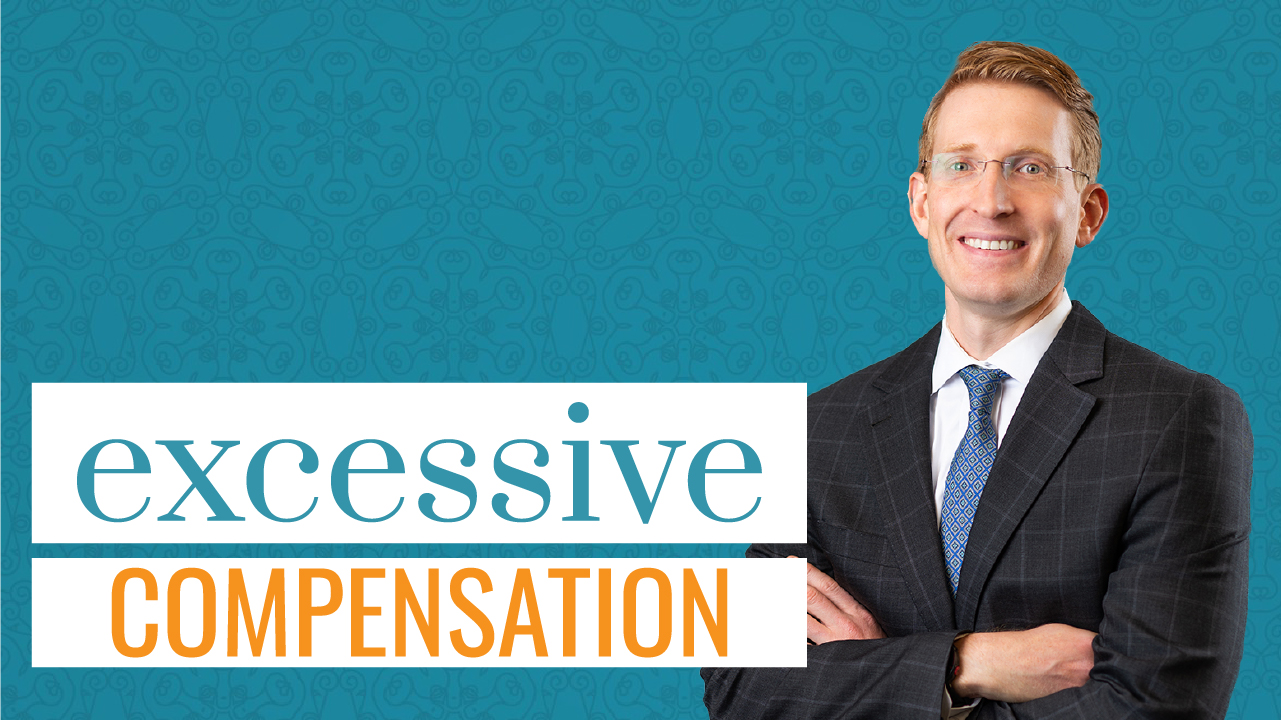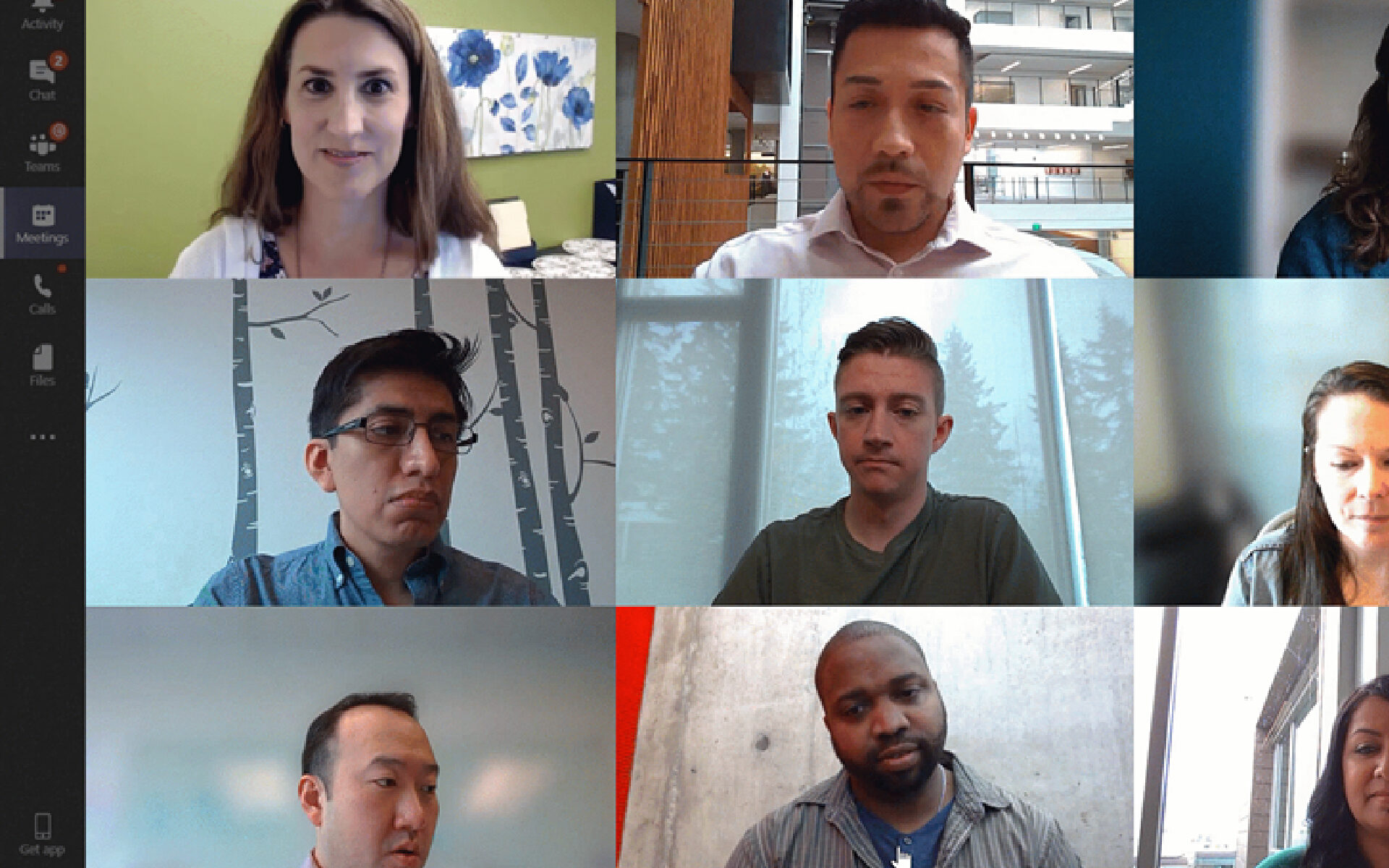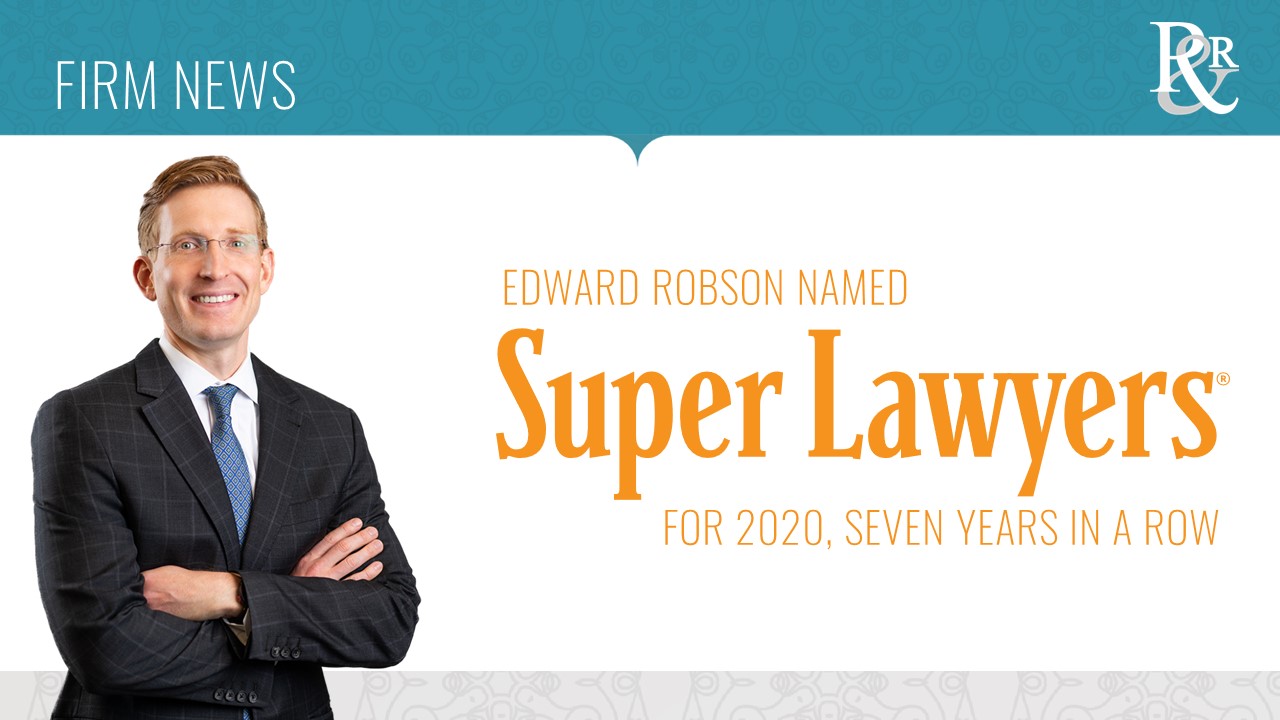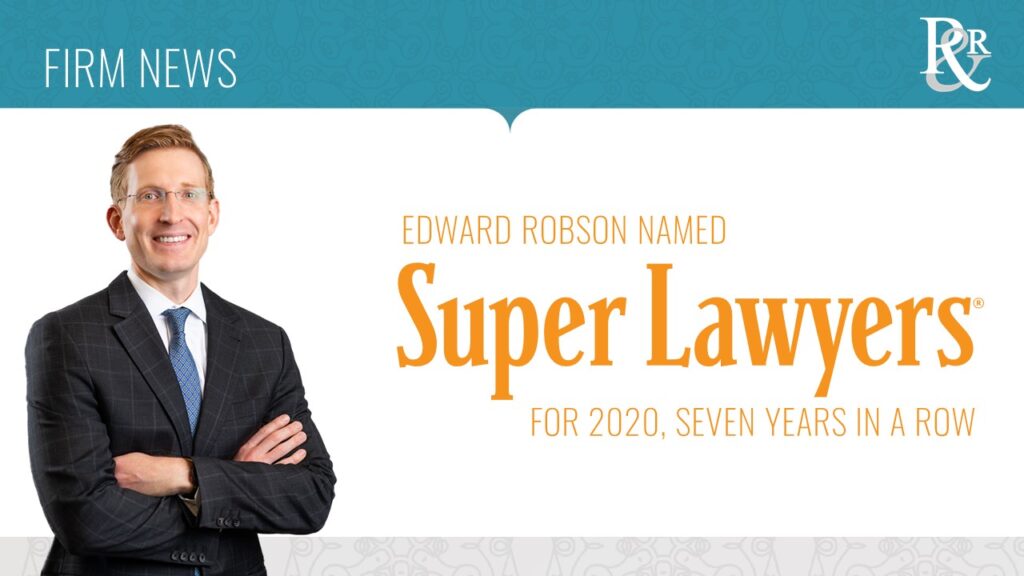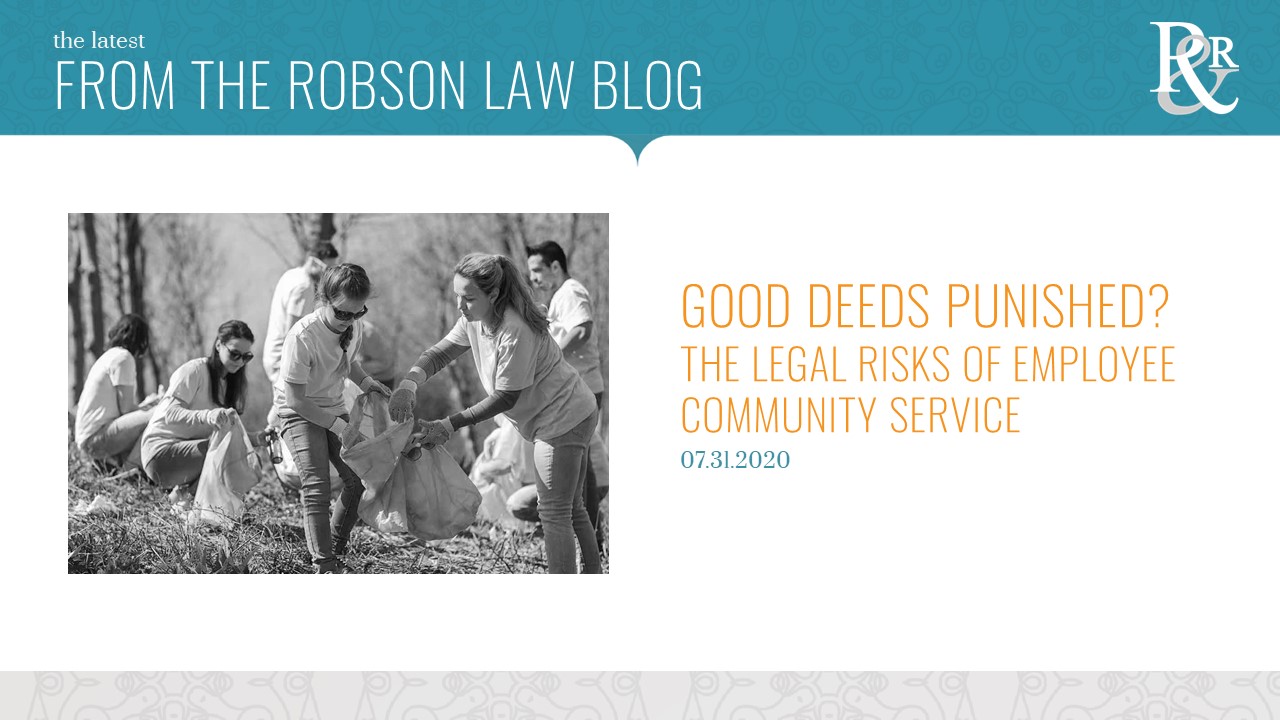Getting your hands around a just-out-of-reach structure
Excessive Compensation: What to do when the co-owners of your business pay themselves excessively
Excessive Compensation: What to do when the co-owners of your business pay themselves excessively
Getting Your Hands Around a Just-Out-of-Reach Structure
Many transactional attorneys view the fiduciary duties that flow from those in control of a company—officers, directors, managers, general partners and majority shareholders—to those not in control to be a nuisance because of the uncertainty they introduce into corporate transactions. To these attorneys, those duties are particularly problematic in the context of limited liability companies, limited liability partnerships and similar non-corporate entities because their contours are less defined than in a traditional corporation.
This uncertainty around fiduciary duties in non-corporate entities is where transactional lawyers who represent controlling owners tend to square off with litigators who represent minority owners. Transactional lawyers develop and refine corporate structures that allow their controlling clients to run businesses without liability to minority owners. Litigators look for ways to charge those in control of the entity with breach of fiduciary duty when they perceive self-dealing or mismanagement.
The practical implications of this conflict are particularly felt in the context of closely-held entities, where the existence of a fiduciary duty owed by a “deep-pocket” party can mean significant individual liability for a defendant and the difference between a successful outcome or a worthless judgment for a plaintiff.
Just-Out-Of-Reach Structures
A “just-out-of-reach” corporate structure attempts to place deep-pocket individuals and companies in a position where they can control an entity without owing any fiduciary duty to non-controlling owners of the entity. For example, assume Widget LLC is a manager-managed company. The relevant statute imposes various fiduciary duties on the manager of Widget LLC. If the manager of Widget LLC were an individual, the minority owners of Widget LLC could assert a derivative claim and recover from the individual’s assets. A just-out-of-reach structure adds an additional corporate layer to prevent the individual manager from owing any duty to Widget LLC. Under such approach, the manager would be another entity—Widget Manager LLC—wholly owned by the individual. Widget Manager LLC owes a statutorily imposed duty to Widget LLC but the individual only owes a duty to Widget Manager LLC. The individual still controls the operations of Widget LLC because he or she controls Widget Manager but owes no statutorily imposed duty to Widget LLC. If the owners of Widget LLC successfully assert a derivative claim against Widget Manager, they are likely to have an uncollectable judgment. The bad actor here—the individual behind Widget Manger—is just out of reach of plaintiffs’ claims. This concept can be used with any entity that does not require that those in control of the entity be individuals.
It is easy to see the implications of a structure that allows individuals to operate a business to the detriment of its owners without consequence. Conversely, such a structure does nothing more than use the benefit of the corporate veil created by legislatures and regularly enforced by courts. For decades, Delaware courts have partially resolved this tension in favor of the out-of-control party. Pennsylvania’s jurisprudence is less clear but potentially even broader.
Delaware’s Approach: In re USACafes
The Chancery Court’s decision In re USACafes LP. Lit. establishes that the fiduciaries of fiduciaries can be held responsible for certain breaches of fiduciary duty. 600 A.2d 43 (Del. Ch. 1991). USACafes was a limited partnership with a corporation acting as its general partner. Plaintiffs were a class of the limited partners of USACafes and the defendants were, among others, the owners and directors of the corporate general partner. Plaintiffs alleged that these defendants engaged in self-dealing by selling the assets of USACafe to a third party at an artificially low price in exchange for payments to themselves. The owner and director defendants moved to dismiss, arguing that they owed no duty to USACafes. The court, relying on general principles of fiduciary law, rejected the argument. It reasoned that “the principle of fiduciary duty, stated most generally, [is] that one who controls property of another may not, without implied or express agreement, intentionally use that property in a way that benefits the holder of the control to the detriment of the property or its beneficial owner.” Delaware courts have extended the USACafes framework to other non-corporation entities, such as limited liability companies and statutory trusts.
Although the USACafes court recognized that the owners and officers of a corporate general partner owe a fiduciary duty to the partnership, it limited its holding to the fiduciary duty of loyalty and did not address the existence of a duty of care under such circumstances. Subsequent decisions from the Chancery Court have declined to extend USACafes beyond the duty of loyalty to the duty of care. See e.g., Feeley v. NHAOCG, LLC, 62 A.3d 649, 671–72 (Del. Ch. 2012); Bay Ctr. Apartments Owner, LLC v. Emery Bay PKI, LLC, 2009 WL 1124451, at *10 (Del. Ch. Apr. 20, 2009).
Pennsylvania’s Approach: Aiding and Abetting
Although Pennsylvania courts do not appear to have directly addressed the fiduciary obligations of the owners and directors of a corporate fiduciary, both the Superior Court and Commonwealth Court recognize a cause of action for aiding and abetting in the breach of fiduciary duty. To establish liability for aiding and abetting breach of fiduciary duty, a plaintiff must show “(1) a breach of a fiduciary duty owed to another; (2) knowledge of the breach by the aider and abettor; and (3) substantial assistance or encouragement by the aider and abettor in effecting that breach.” Potok v. Rebh, 2017 WL 1372754, at *4 (Pa. Super. Ct. Apr. 13, 2017); see also Koken v. Steinberg, 825 A.2d 723, 732 (Pa. Comwlth. Ct. 2003). Unlike the Chancery Court’s analogy to the general law of fiduciaries, the Pennsylvania cause of action sounds in the tort of aiding and abetting. Koken, 825 A.2d at 732 (citing Restatement (Second) of Torts § 876).
Pennsylvania courts do not appear to have yet applied the aiding and abetting cause of action in the context of a just-out-of-reach structure. Notwithstanding, such a claim appears to offer a strong basis to access liability against just-out-of-reach defendants. If a corporate fiduciary breached its obligations to a company, the controlling owners of a corporate fiduciary would certainly be aware of the breach and provide substantial assistance in effecting it. Indeed, the breach would have resulted from their decisions and actions taken through the corporate fiduciary.
The Takeaway
Both the Delaware and Pennsylvania approaches to just-out-of-reach corporate structures may be a significant departure from the expectation that the corporate veil prevents individual liability in most circumstances. Corporate counsel advising closely held businesses should consider the inclusion of robust indemnification provisions in the company’s organizational documents and the recommendation to purchase directors and officer’s insurance rather than attempting to rely exclusively on a just-out-of-reach structure.
Litigators should carefully evaluate the possibility of including the individuals behind a just-out-of-reach structure to reduce the risk of obtaining an uncollectable judgment. Even in Pennsylvania, where the duties of a fiduciary’s fiduciary are not as well defined as under Delaware law, the existence of the aiding and abetting cause of action justifies the inclusion of a larger cadre of potential defendants.
Edward S. Robson is the co-founder and managing shareholder of Robson & Robson, P.C. and focuses his practice on commercial litigation, corporate law and mergers and acquisitions. He has experience litigating a variety of commercial disputes, including those arising from shareholder conflicts, breach of contract, unfair competition, and real estate transactions.
Can I Record Microsoft Teams Meetings?
With many of us working from home, the use of Microsoft Teams and similar platforms to hold virtual meetings has exploded. These platforms allow users to easily record meetings for later use. Those recordings, however, can lead to significant legal liability if not made in accordance with state “wiretap” laws.
How Does Microsoft Teams Work?
Microsoft Teams allows group chats and video conferencing with groups of up to 10,000, regardless of their location. Teams allows you to record any meeting or call to capture audio, video and screen sharing activity. The recording is saved to Microsoft Stream and can be securely shared across an organization.
In a Microsoft Teams meeting, there are just two roles: presenter and attendee. Presenters, Microsoft says, “can do just about anything that needs doing in a meeting, while the role of an attendee is more controlled.” The presenter can start or stop a recording, while an attendee does not.
But is it legal to record these communications? The answer is: “it depends.”
Wiretap Laws Apply
Most states have criminal statutes that prohibit the unauthorized interception or recording of electronic communications. These statutes are typically referred to as “wiretap” laws.
Microsoft Teams meetings are “electronic communications” under most wiretap statutes. It is, therefore, generally illegal to record them unless some or all the participants consent first.
Wiretap laws typically fall into one of two categories – “one-party consent” and “two-party consent.” A one-party consent statute allows the recording of electronic communications if one party to the communication consents. For example, Arizona’s wiretapping law is a “one-party consent” law. In that state, it’s a crime to intercept a wire or electronic communication unless you are the sender or receiver of the communication. If you are recording a videoconference between you and your boss, it would be legal in the Grand Canyon State because one person – you – consented to the recording.
A two-party consent statute requires all the participants in the meeting to consent to the recording. For example, Pennsylvania is a two-party consent state. If you’re recording a videoconference between you and your boss, it would be illegal in the Keystone State unless both you and your boss consented to it.
But what happens when you have participants located in multiple states with different laws? The practical answer is to assume the call is subject to a two-party consent law and have every participant consent to the recording of the call. Consent need not be fancy and can be accomplished by alerting everyone on the call that you are recording the call and ask anyone if they have any objections. Ideally, your request would be recorded at the beginning of the meeting.
Takeaway
Recording a Microsoft Teams meeting is possible and legal with the appropriate consent. Businesses that use Microsoft Teams or other videoconferencing programs should create a policy to assist their employees in making and using recordings in a way that does not run afoul of state wiretap laws.
Strategies for Better Non-Competes
Strategies for Better Non-Competes
Edward Robson named to SuperLawyers for seventh straight year
Good Deeds Punished? The Legal Risks of Employee Community Service
Employers often plan company-wide charitable initiatives. To support their employees’ commitment to community welfare, many employers match employee donations to charitable or educational institutions and publicize volunteer opportunities. Some organizations, however, are making a shift to a new way of corporate giving that percolates from the bottom up: encouraging employees to “get involved” through contributions of time and talent.
More companies are creating Employee Volunteer Programs (EVP), continuous, managed efforts that allow employees the opportunity for hands-on service to the community. Employer programs are varied and innovative. Companies frequently contribute by getting the word out through community outreach that pairs organizations with employee volunteers who have particular skill sets and interests. While some employers provide paid time off for employees who volunteer, others simply permit employees to volunteer during working hours or facilitate participation in charitable enterprises during non-working hours. This kind of volunteerism has many proven benefits including increasing employee satisfaction, enhancing community perceptions of the employer and providing tangible benefits to the larger community.
Despite good intentions, these “good deeds” come with the risk of liability under the Fair Labor Standards Act (“FLSA”) if not properly managed. The FLSA is the federal law that governs the calculation and payment of wages. In some instances, time spent by employees in charitable activities may be considered as compensable time under the FLSA, requiring the employer to pay wages and even overtime to employees for time spent volunteering.
The FLSA does not require employers to pay employees for time spent volunteering for religious, charitable, civic, humanitarian, or similar non-profit organizations when such participation is truly voluntary. However, when charitable events or participation becomes intertwined with company activities, questions arise as to whether an employee may really decline to participate. Because of disparities in bargaining power, employees may feel pressure by employers to engage in charitable activities. Such pressure may even be overt. For example, a directive to all employees to participate in a “community day of service” – without any opportunity for an employee to opt out – suggests that participation is not voluntary. Subtle employer pressure – such as reassignment to undesirable tasks for non-participants during the time when others are volunteering – also raises issues.
Time spent working at the employer’s request, or under its direction or control, or for a charity related to the company or the company’s owner, is considered work time. The Department of Labor takes the position that when, at the behest of the employer, employees volunteer to do the same type of work that they perform as part of their normal work duties, the volunteer work must be included in the employees’ hours worked calculations.
Awards for FLSA violations generally include fee shifting. Consequently, an employer who runs afoul of the FLSA will be required to pay the employee’s legal fees. Even if the unpaid wages are small, the imposition of attorneys’ fees could result in a significant liability for an employer.
The Takeaway
The key to avoiding FLSA liability is to ensure that employee participation is voluntary and to avoid any perception that an employee will be penalized if he or she fails to participate. It should be clear that the employees are volunteering their time to the third-party organization directly, not to the company itself. Employees volunteering in a capacity similar to their paid work—for example, an accounting firm encouraging its accountants to provide accounting services for a charity—is particularly problematic.
Observing the following guidelines may reduce risk of an FLSA violation:
- The charitable organization must be separate from the business and unrelated in a significant way to the business owners
- The charitable event does not result in direct economic benefit to the business
- The time spent at the organization or event is outside of regular working hours
- The company notices about a volunteer event or opportunity include a statement that the employees are not required to attend or participate
- Supervisors are not allowed to direct or control their employees’ participation
- Employees who choose not to participate in the event are not treated differently than employees who choose to participate.
Utilizing these approaches may help to avoid FLSA liability or minimize liability if a claim does arise. We all want to start the holiday season on the right foot, and a methodical, cautious approach may be the only way that the good deeds of the employees do not result in repercussions for the employer.



